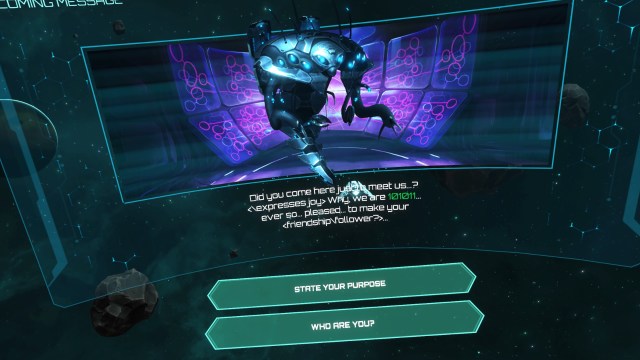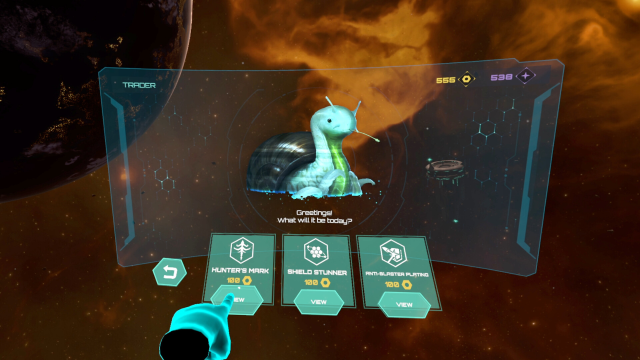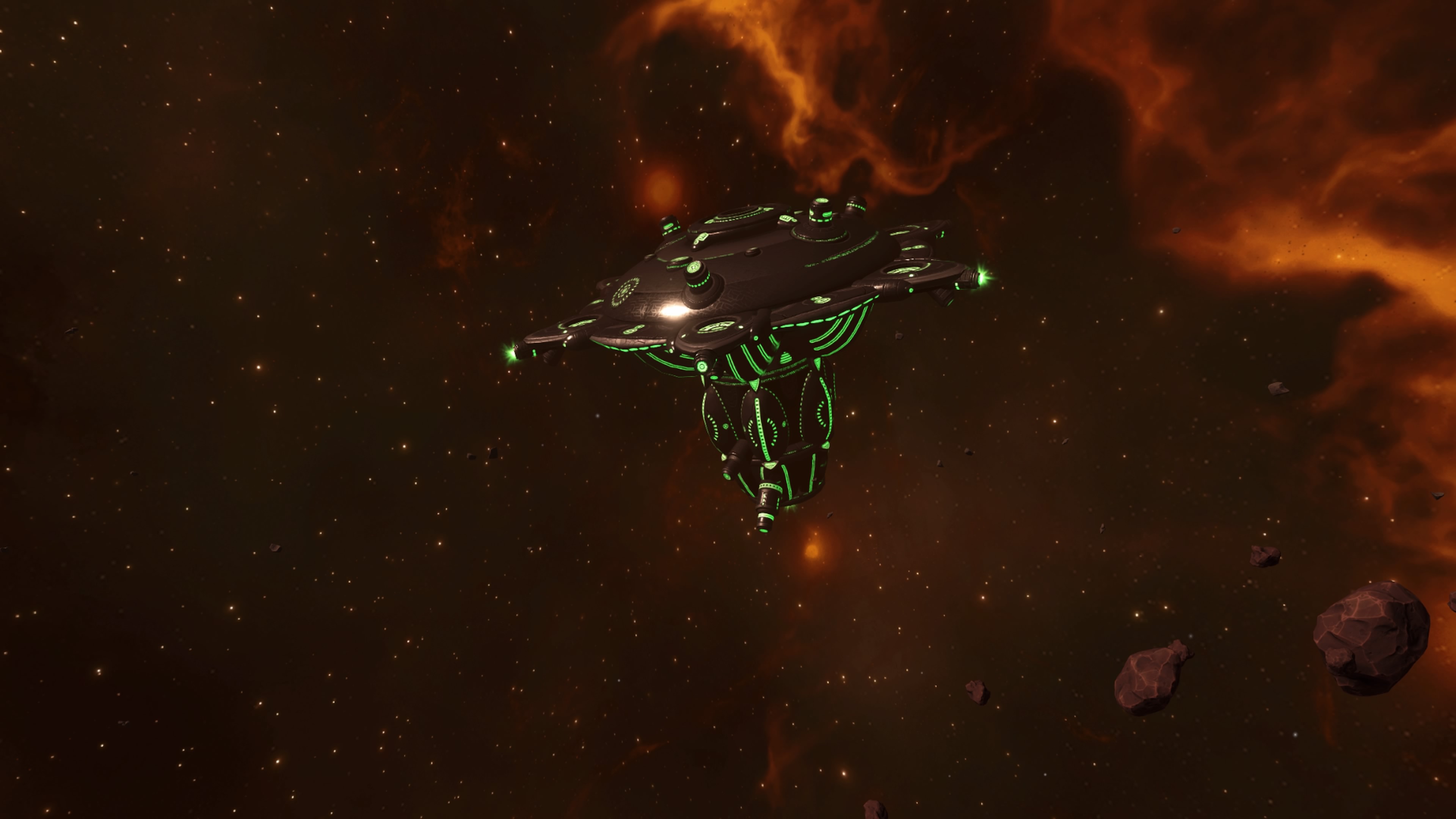Stellaris is probably my favorite grand strategy game of all time, so when I saw developer Fast Travel Games was creating a standalone VR roguelite set in the Stellaris universe, I immediately became interested. I’ll admit, I don’t have too much experience with VR. But the idea of a Stellaris story with its many species, systems, and space structures sounded like the perfect fit for VR. Ghost Signal: A Stellaris Game steps away from grand strategy and instead puts players in control of a single ship as they traverse systems dealing with threats, acquiring upgrades, and tracking down the Ghost Signal.
Ghost Signal: A Stellaris Game puts players in the role of the captain of a single ship called the Aurora. At the end of the tutorial the Aurora receives a mystery signal, dubbed the Ghost Signal, that sets in motion the story of the game. Players must track down the source of the signal as they take on various enemy ships, traverse asteroid fields, and even encounter various space creatures.
Honestly, I was expecting the Stellaris universe to do a lot of the heavy lifting here. But in reality, the roguelite gameplay is what shines. The overarching story of the Ghost Signal sort of fell into the background, and I found myself more just worrying about getting ship upgrades and taking on more—and stronger—enemies.

Ghost Signal: A Stellaris Game (PSVR2[reviewed], Meta Quest 2, SteamVR)
Developer: Fast Travel Games
Publisher: Fast Travel Games
Released: October 5, 2023
MSRP: $19.99
VR was made for space
Space really is the perfect environment for VR. In Ghost Signal, you’ll progress through different Sectors via a map, similar to the progression in FTL: Faster than Light. Each Sector has a different encounter upon reaching it. These include battles, boss battles, random events, or even shops and rest points. But also, each sector features a beautiful backdrop of space, with differing planets and other celestial bodies in the background. In the foreground, whatever you are encountering takes center stage alongside asteroids, your Aurora ship, and other entities you can interact with.
A robot companion assists you with learning the ropes and exploring the universe in Ghost Signal. As you find new entities in space, the robot will tell you more information about it. It’s a nice little added element for fellow Stellaris fans, helping to flesh out the universe. Unfortunately, I do think the overall narrative is a bit lacking. For me, upgrading my Aurora and taking on more challenging encounters is what got me excited. Not so much finding out the source of the Ghost Signal. Of course, as a roguelite, the story is probably intended as added flavor, anyway. But with “A Stellaris Game” in the title, I really hoped for more actual Stellaris.

A hybrid of various genre favorites
The core gameplay of Ghost Signal revolves around swapping between three different weapon types for the Aurora. Autocannons deal hull damage, lasers deal shield damage, and missiles deal damage to both types while sacrificing attack speed for increased range. Meanwhile, you can navigate your ship to create distance from attacking fleets. The goal is to take out enemy ships one by one while taking the least amount of damage you can. Once you’ve taken out the entire fleet, you obtain a reward that will enhance your ship in some way, and then choose the next sector you want to advance to.
As you progress, you’ll find various ways to enhance your Aurora. Alongside upgrades for encounters, you’ll also come across shops and other NPCs that are willing to trade upgrades. There’s also a mechanic where you can gamble for the opportunity to receive an upgrade while having the chance to instead receive a debuff. It’s all the roguelite mechanics you can expect, plopped into the Stellaris universe. It works surprisingly well, as upgrades feel meaningful.
Even if you end up failing a run—as is common with this genre—you’ll have the opportunity to carry over some resources and use them to obtain permanent upgrades to the Aurora. These upgrades will persist for all future runs. As such, each successive run should allow you to gradually progress further. It’s a fun gameplay loop and definitely where Ghost Signal shines. The rock paper scissors style combat mixed with the ability to focus your build in a specific way keeps the combat fresh with each run.

Yep, that’s a Space Dragon
With some slight alterations, I could easily see Ghost Signal: A Stellaris Game working in a non-VR environment. I’d imagine controls could easily be reworked to a mouse and keyboard or even a controller to operate the Aurora. With its replayability value and low price point, it’s the perfect play-a-run-here-and-there sort of title. It’s a very similar experience to FTL and other similar roguelites. That’s not to say it doesn’t work as a VR title. It’s just one of those games that could work as both.
But as it is, Ghost Signal: A Stellaris Game is an entertaining and worthwhile adventure through the universe of Stellaris. If you want to play captain and commandeer a ship through asteroid belts while you fight entire fleets of enemies and even massive bosses, look no further. The roguelite loop is satisfying and rewarding, and slots well into the VR experience. I don’t know what Fast Travel Games plans to do next, but I’d love to see what other genres the studio could pull off in the Stellaris setting.
[This review is based on a retail build of the game provided by the publisher.]


